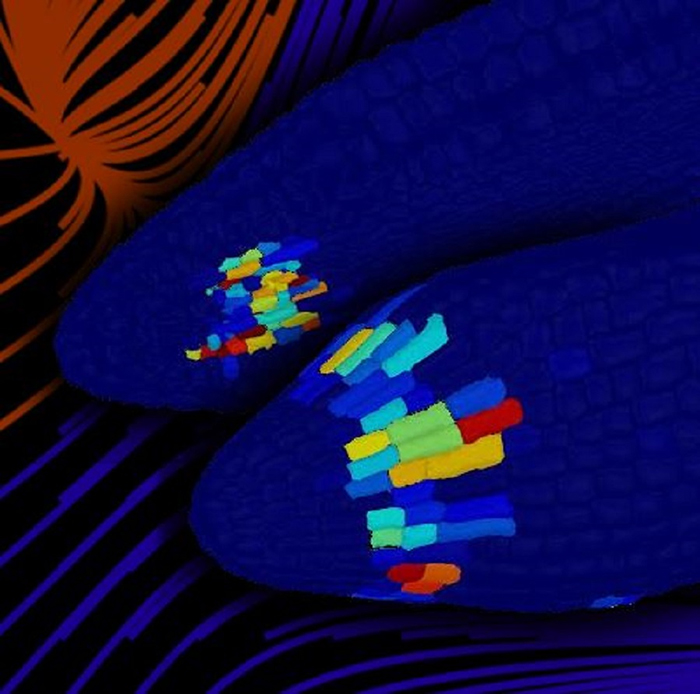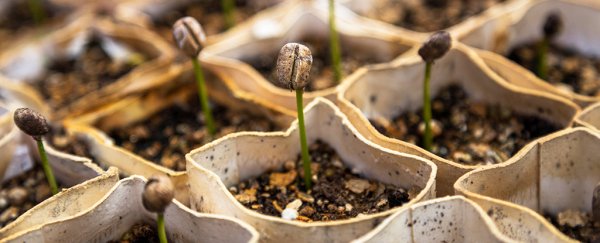Have you ever seen a plant seed look like it's thinking? Researchers have found two small groups of cells inside plant embryos that operate in a similar way to the human brain, and help decide when the plant should start sprouting.
We're not talking about actual grey matter here, but the layout is similar to a human brain, with hormones moving between the two sets of cells in the same way that they do when we're deciding whether or not to move.
The team from the University of Birmingham in the UK used a maths model to show that communication between the two cell groups – one promoting dormancy and one promoting germination – controls the plant's sensitivity to its environment.
When the germination cell group finally wins, the seed sprouts.
"Our work reveals a crucial separation between the components within a plant decision-making centre," says one of the team, George Bassel. "In the human brain, this separation is thought to introduce a time delay, smoothing out noisy signals from the environment and increasing the accuracy with which we make decisions."
"The separation of these parts in the seed 'brain' also appears to be central to how it functions."
This decision-making centre was found in the root tip of the Arabidopsis thaliana (thale cress) seeds studied by the researchers.
Based on the initial modelling results, the team developed a mutated plant with stronger chemical links between the cells to show that the timing of germination did indeed depend on the signals passing to and from these groups.
It's almost as if the two tiny clumps of cells are having an ongoing debate about whether or not to start the sprouting process. By tweaking the hormone activity between the cell groups, the scientists were able to control the timing of the germination.
The separation between the cells allows the plant seed to respond to more external stimuli – it's like reading one critic's review of a film or reading four critics' reviews, according to the researchers.
 Researchers found two groups of cells in the plant seed tips. Image: University of Bimringham
Researchers found two groups of cells in the plant seed tips. Image: University of Bimringham
What's more, the preliminary maths suggested more seeds would germinate in varying environments, like fluctuating temperatures, and this was indeed borne out in the lab.
Why that is, we're not exactly sure. It could be that a plant seed uses temperature change to work out when the seasons are changing or how deep it's buried in the soil, all useful information that can be used to decide when to jump into life.
When to sprout is the one big decision a plant seed needs to make, after all – get the timing wrong and the plant could get crowded out or killed off by the weather conditions.
You can add this latest research to a growing body of recent work uncovering more about the 'thinking' processes going on inside plants.
Last year we heard that plants really can respond to the way we touch them – with different sensations prompting many physiological and genetic changes, depending on the type of stimulation.
We also know that plants can learn from experience, not through neurons and human-like thought, but through chemical signals passing through the plant.
The researchers say their work is going to be useful in developing crops and plants in the future – we just need to know more about what they're thinking.
Seeds could be engineered to sprout together, perhaps, or to be more robust to climate change, though those developments are still some way down the line.
"Our work has important implications for understanding how crops and weeds grow," says Bassel.
"There is now potential to apply this knowledge to commercial plants in order to enhance and synchronise germination, increasing crop yields and decreasing herbicide use."
The research has been published in PNAS.
